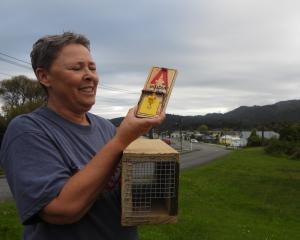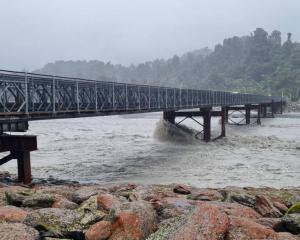Franz Josef residents are concerned the Westland District Council will create a ''ghetto-like'' area in the town by rezoning land along the Alpine fault line to stop any new development there.
Franz Josef development society chairman Marcel Fekkes said yesterday there were 32 commercial and residential buildings in the zone.
"It will become a bit of a wasteland. It's not good for the growth of Franz, that's for sure."
Relocating that part of the township to more stable ground is on the agenda for a meeting of property owners in the town next week, along with
the vexed question of who might pay for it.
The Westland council's proposed district plan change 7 establishes "fault rupture avoidance zones" along the fault line, which passes diagonally through the southern end of the town from southwest to northeast.
Inside the zones, new building or building expansion would effectively be halted and the land restricted, in Franz Josef's case, to car parking and gardens "due to the risk to human safety".
Mr Fekkes said there was ample space to redevelop the town on land further north and he believed government assistance should be made available to make that happen.
"If council wants to put that [plan change] in place ... then, in my view, we need to empty that zone of buildings and make it a nice green belt, with a nice park.
"So, we just need to move the town a bit north - not all of it - but obviously the centre of town will change a bit."
Otago Daily Times inquiries to government ministers' offices produced no answer on the likelihood of government assistance and met with some scepticism Franz Josef building owners would be likely to receive anything from central government.
Westland Mayor Maureen Pugh could not be contacted last night to find out whether she considered the council would have any liability as a result of the zone change.
Earlier yesterday, council planning manager Richard Simpson said he did not consider the move would be "a big deal".
"Some of them [commercial buildings] have probably reached their economic life anyway and they could probably make some business decisions and relocate.
"We are only talking about a discrete area of Franz Josef."
Mr Simpson said the council had made a "courageous decision" and he was saying to the public it now had the information it needed on which to base future decisions.
"Nobody's saying get out of here, it's dangerous. There are some longer-term decisions to be made."
Mr Fekkes said the town's only petrol station "straddles" the fault line and that would become an issue if the town had to "dig ourselves out" after an earthquake.
"In the course of a Civil Defence emergency, we would certainly need a fuel dump somewhere, and definitely not there."
Explaining its reasons for establishing the new zone, the council said any building or structure affected by fault rupture was likely to have considerable damage and lives would be at risk.
The Institute of Geological and Nuclear Sciences [GNS] has predicted a 20% chance of an earthquake on the alpine fault line in the next 30 years.
The predicted movement was 8m to 9m horizontally and 1m to 2m vertically.
Mr Fekkes was in the process yesterday of setting up a meeting of the owners of affected buildings and other interested parties. He expected it would be held next week.
The public has until September 24 to file submissions on the council's plan change.












